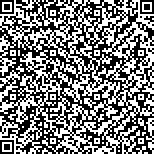周艳平,张妍昭,王刚,刘跃斌,胡姗姗.经颅直流电刺激联合运动想象疗法改善脑卒中患者上肢功能的疗效观察[J].中华物理医学与康复杂志,2018,40(9):657-661
扫码阅读全文

|
| 经颅直流电刺激联合运动想象疗法改善脑卒中患者上肢功能的疗效观察 |
|
| |
| DOI: |
| 中文关键词: 经颅直流电刺激 运动想象 功能 上肢 脑卒中 |
| 英文关键词: Transcranial direct current stimulation Motor imagery therapy Function Upper limb Stroke |
| 基金项目: |
|
| 摘要点击次数: 6371 |
| 全文下载次数: 6846 |
| 中文摘要: |
| 目的 观察和探讨经颅直流电刺激(tDCS)结合运动想象疗法改善脑卒中患者上肢功能障碍的疗效。 方法 纳入94例脑卒中偏瘫患者并按随机数字表法分为常规治疗组(31例)、运动想象治疗组(31例)和联合治疗组(32例)。3组均行常规康复训练,常规治疗组行常规作业治疗,运动想象治疗组行运动想象疗法治疗,联合治疗组行tDCS联合运动想象疗法治疗。分别于治疗前和治疗8周后,采用Fugl-Meyer量表(FMA)上肢部分、香港版偏瘫上肢功能测试(FTHUE)及改良Barthel指数(MBI)对3组患者的上肢功能及日常生活活动能力进行评定。 结果 治疗后,联合治疗组和运动想象治疗组的FMA评分分别为(37.81±12.80)和(31.39±15.62)分,均明显高于常规治疗组[(27.61±14.90)分],且组间差异有统计学意义(P<0.05),而联合治疗组的FMA评分较运动想象治疗组有明显改善(P<0.05);联合治疗组和运动想象治疗组的FTHUE分级均显著高于常规治疗组,组间差异有统计学意义(P<0.05),且联合治疗组的FTHUE分级较运动想象治疗组有明显提高(P<0.05);联合治疗组和运动想象治疗组的MBI评分分别为(57.78±7.73)和(51.87±9.31)分,均明显高于常规治疗组[(45.19±9.07)分],且组间差异有统计学意义(P<0.05),而联合治疗组的MBI评分较运动想象治疗组亦有明显改善(P<0.05)。 结论 tDCS联合运动想象疗法可显著改善脑卒中偏瘫患者的上肢功能,且较常规作业治疗及运动想象疗法更为明显。 |
| 英文摘要: |
| Objective To investigate the effect of transcranial direct current stimulation (tDCS) combined with motor imagery therapy on the function of upper limbs of stroke survivors. Methods Ninety-four stroke patients were randomized into a routine group (n=31), a motor imagery group (n=31), and a combination group (n=32). All the patients received basic routine rehabilitation therapy, while the routine group accepted traditional occupational therapy, the motor imagery group accepted motor imagery therapy, and the combination group accepted tDCS and motor imagery therapy. The upper limb function of the patients was assessed using Fugl-Meyer assessment (FMA) of upper extremities, the Hong Kong version of functional test for the hemiplegic upper extremity (FTHUE) and the modified Barthel Index (MBI) before and after 8-week treatment. Results The average FMA of the combination group and motor imagery group were (37.81±12.80) and (31.39±15.62), respectively, both significantly higher than that of the routine group (27.61±14.90). The average FTHUE of the combination group and motor imagery group was both significantly higher than that of the routine group. Moreover, the average MBI of the combination group and motor imagery group were (57.78±7.73) and (51.87±9.31), respectively, both significantly higher than that of the routine group (45.19±9.07) (P<0.05 for all). Conclusion tDCS combined with motor imagery therapy can significantly improve the upper limb function of stroke patients, significantly superior to tDCS or motor imagery therapy solely. |
|
查看全文
查看/发表评论 下载PDF阅读器 |
| 关闭 |
|
|
|